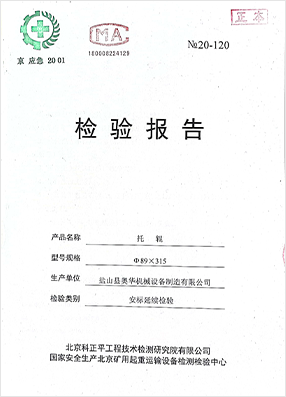 Afrikaans
Afrikaans  Albanian
Albanian  Amharic
Amharic  Arabic
Arabic  Armenian
Armenian  Azerbaijani
Azerbaijani  Basque
Basque  Belarusian
Belarusian  Bengali
Bengali  Bosnian
Bosnian  Bulgarian
Bulgarian  Catalan
Catalan  Cebuano
Cebuano  Corsican
Corsican  Croatian
Croatian  Czech
Czech  Danish
Danish  Dutch
Dutch  English
English  Esperanto
Esperanto  Estonian
Estonian  Finnish
Finnish  French
French  Frisian
Frisian  Galician
Galician  Georgian
Georgian  German
German  Greek
Greek  Gujarati
Gujarati  Haitian Creole
Haitian Creole  hausa
hausa  hawaiian
hawaiian  Hebrew
Hebrew  Hindi
Hindi  Miao
Miao  Hungarian
Hungarian  Icelandic
Icelandic  igbo
igbo  Indonesian
Indonesian  irish
irish  Italian
Italian  Japanese
Japanese  Javanese
Javanese  Kannada
Kannada  kazakh
kazakh  Khmer
Khmer  Rwandese
Rwandese  Korean
Korean  Kurdish
Kurdish  Kyrgyz
Kyrgyz  Lao
Lao  Latin
Latin  Latvian
Latvian  Lithuanian
Lithuanian  Luxembourgish
Luxembourgish  Macedonian
Macedonian  Malgashi
Malgashi  Malay
Malay  Malayalam
Malayalam  Maltese
Maltese  Maori
Maori  Marathi
Marathi  Mongolian
Mongolian  Myanmar
Myanmar  Nepali
Nepali  Norwegian
Norwegian  Norwegian
Norwegian  Occitan
Occitan  Pashto
Pashto  Persian
Persian  Polish
Polish  Portuguese
Portuguese  Punjabi
Punjabi  Romanian
Romanian  Russian
Russian  Samoan
Samoan  Scottish Gaelic
Scottish Gaelic  Serbian
Serbian  Sesotho
Sesotho  Shona
Shona  Sindhi
Sindhi  Sinhala
Sinhala  Slovak
Slovak  Slovenian
Slovenian  Somali
Somali  Spanish
Spanish  Sundanese
Sundanese  Swahili
Swahili  Swedish
Swedish  Tagalog
Tagalog  Tajik
Tajik  Tamil
Tamil  Tatar
Tatar  Telugu
Telugu  Thai
Thai  Turkish
Turkish  Turkmen
Turkmen  Ukrainian
Ukrainian  Urdu
Urdu  Uighur
Uighur  Uzbek
Uzbek  Vietnamese
Vietnamese  Welsh
Welsh  Bantu
Bantu  Yiddish
Yiddish  Yoruba
Yoruba  Zulu
Zulu Efficient Mining Conveyor Roller Solutions for Enhanced Material Transportation and Durability
Understanding Mining Conveyor Rollers An Essential Component in the Mining Industry
In the mining industry, efficiency and reliability are paramount. One of the critical components that ensure smooth operations in mining processes is the conveyor system. Within these conveyor systems, conveyor rollers play a vital role in facilitating the transportation of minerals from one point to another, significantly impacting productivity rates and operational costs. This article delves into the importance, types, and maintenance of mining conveyor rollers.
What are Mining Conveyor Rollers?
Mining conveyor rollers are cylindrical components that support the conveyor belt, allowing it to move smoothly along its path. These rollers are typically made of durable materials, designed to withstand harsh mining environments that include extreme temperatures, heavy loads, and abrasive materials. The primary function of the rollers is to reduce friction between the belt and the conveyor frame, ensuring that the belt can transport mined materials with minimal resistance.
Importance of Conveyor Rollers in Mining Operations
1. Efficiency Conveyor rollers serve as the backbone of the conveyor system. Their ability to facilitate smooth movement directly translates to higher efficiency in transporting bulk materials. This efficiency is crucial in a mining setting where time is money, and delays can result in significant financial losses.
2. Load Distribution Conveyor rollers help evenly distribute the weight of the materials being transported. This is particularly important when dealing with heavy bulk loads, as uneven weight distribution can lead to mechanical failures and increased wear on conveyor components.
3. Reduction in Wear and Tear Quality conveyor rollers minimize wear on the conveyor belt and other system components. By providing proper support and reducing friction, these rollers extend the life of the entire conveyor system, resulting in lower maintenance costs and less frequent replacements.
4. Safety A well-functioning conveyor system, supported by reliable rollers, enhances safety in mining operations. Malfunctioning rollers can lead to conveyor breakdowns, which may pose risks to workers and equipment. Regular maintenance and timely replacement of worn roller components help mitigate these risks.
Types of Mining Conveyor Rollers
Conveyor rollers come in various types, each tailored for specific applications within the mining industry. The most common types include
1. Garland Rollers These consist of multiple rollers arranged in a triangular pattern, providing better support and load stability. They are often used in inclined or curved conveyor systems.
mining conveyor roller

2. Impact Rollers Designed to absorb shocks and impacts, these rollers are typically installed at loading areas where materials are dumped onto the belt. Their robust construction protects the conveyor system from damage caused by heavy loads.
4. Guide Rollers These rollers help maintain the alignment of the conveyor belt, preventing slippage and ensuring that materials are transported efficiently.
Maintenance of Conveyor Rollers
To ensure the longevity and efficiency of mining conveyor rollers, regular maintenance is essential. Here are some key maintenance practices
1. Inspection Conduct routine inspections to identify signs of wear, deterioration, or misalignment. Look for debris accumulation or any abnormalities in roller rotation.
2. Lubrication Regularly lubricate roller bearings to reduce friction, enhance performance, and extend service life.
3. Cleaning Keep rollers free from dirt and debris, which can affect their operation and lead to premature failure.
4. Replacement Be proactive in replacing worn or damaged rollers before they cause significant issues in the conveyor system.
Conclusion
Mining conveyor rollers are critical components that significantly influence the efficiency and safety of mining operations. Understanding their importance, types, and maintenance requirements ensures that mining facilities can operate at peak performance. By investing in quality rollers and prioritizing their upkeep, mining operators can enhance productivity, reduce costs, and ensure the safety of their workforce in the demanding environment of mineral extraction.
-
Revolutionizing Conveyor Reliability with Advanced Rubber Lagging PulleysNewsJul.22,2025
-
Powering Precision and Durability with Expert Manufacturers of Conveyor ComponentsNewsJul.22,2025
-
Optimizing Conveyor Systems with Advanced Conveyor AccessoriesNewsJul.22,2025
-
Maximize Conveyor Efficiency with Quality Conveyor Idler PulleysNewsJul.22,2025
-
Future-Proof Your Conveyor System with High-Performance Polyurethane RollerNewsJul.22,2025
-
Driving Efficiency Forward with Quality Idlers and RollersNewsJul.22,2025





























